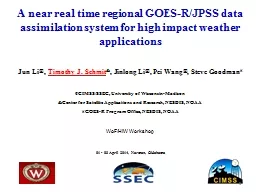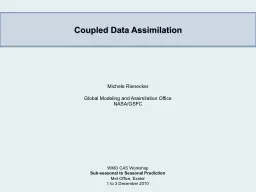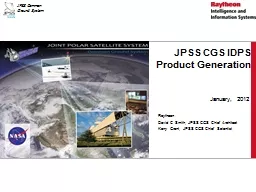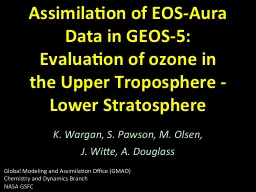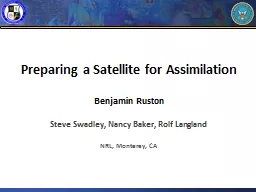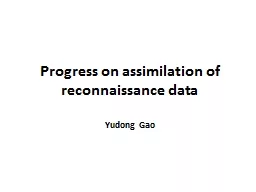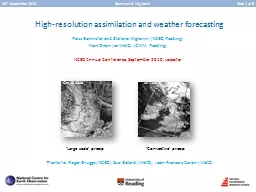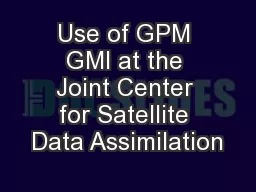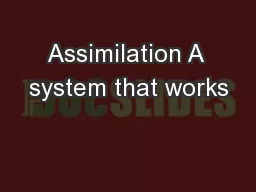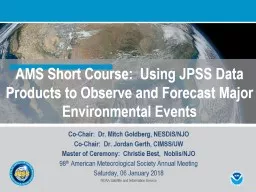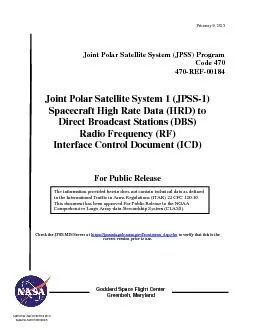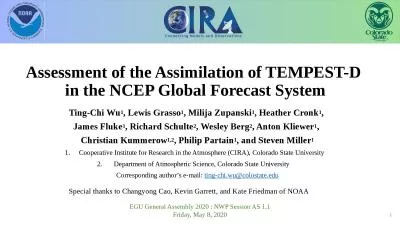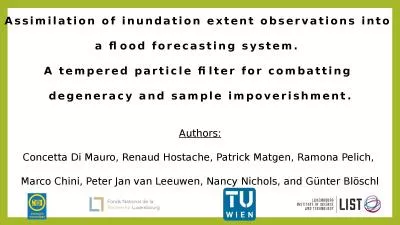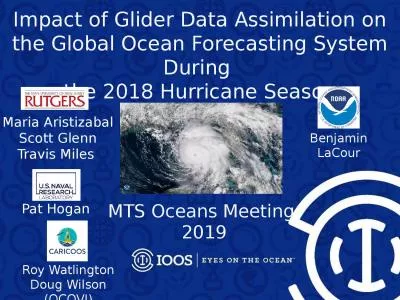PPT-A near real time regional GOES-R/JPSS data assimilation system for high impact weather
Author : faustina-dinatale | Published Date : 2018-11-06
Jun Li Timothy J Schmit amp Jinlong Li Pei Wang Steve Goodman CIMSSSSEC University of WisconsinMadison ampCenter for Satellite Applications and Research
Presentation Embed Code
Download Presentation
Download Presentation The PPT/PDF document "A near real time regional GOES-R/JPSS d..." is the property of its rightful owner. Permission is granted to download and print the materials on this website for personal, non-commercial use only, and to display it on your personal computer provided you do not modify the materials and that you retain all copyright notices contained in the materials. By downloading content from our website, you accept the terms of this agreement.
A near real time regional GOES-R/JPSS data assimilation system for high impact weather: Transcript
Download Rules Of Document
"A near real time regional GOES-R/JPSS data assimilation system for high impact weather"The content belongs to its owner. You may download and print it for personal use, without modification, and keep all copyright notices. By downloading, you agree to these terms.
Related Documents

